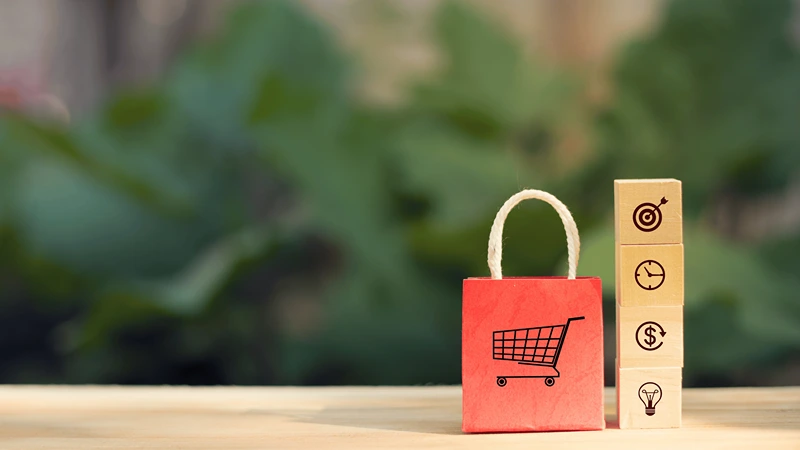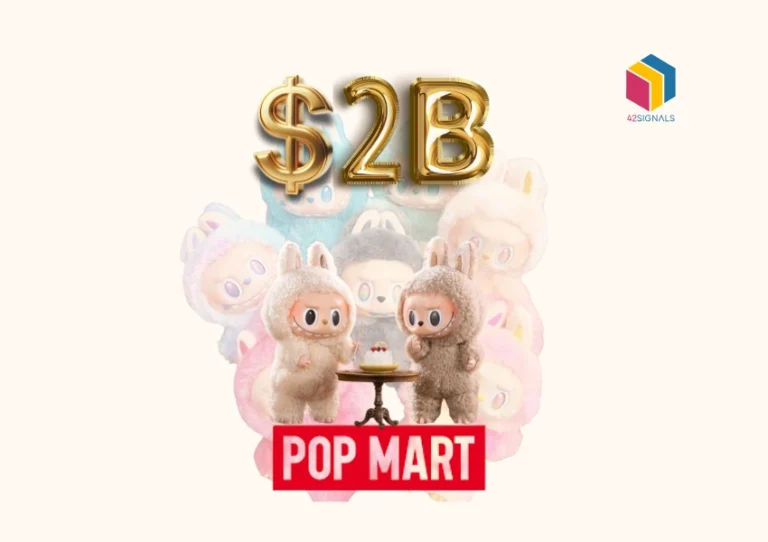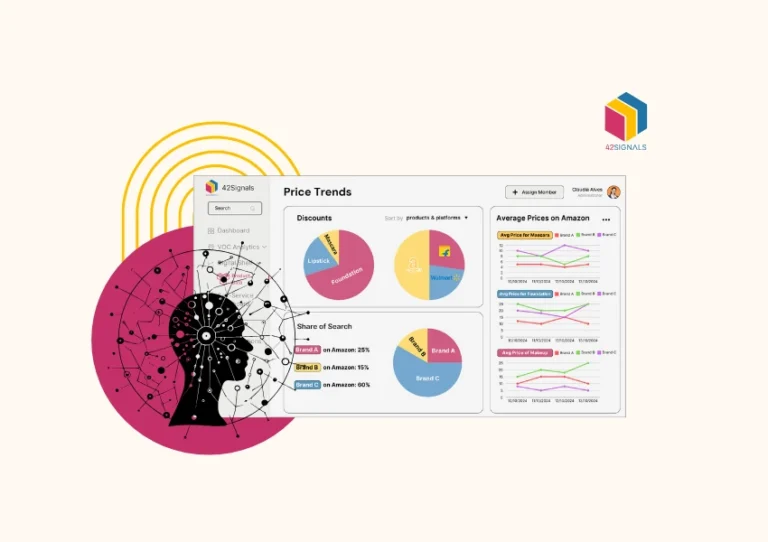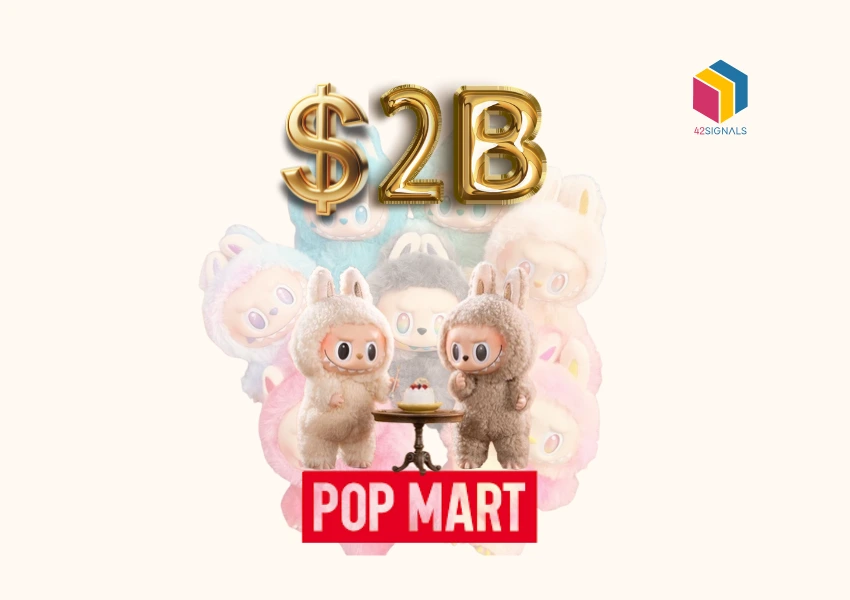The consumer packaged goods (CPG) sector has witnessed a significant transformation with the rise of e-commerce and the widespread shift to online shopping. As more consumers embrace the convenience and accessibility of online platforms, traditional brick-and-mortar retailers are facing increasing competition from digital marketplaces and direct-to-consumer brands leading to CPG growth.
This shift has compelled CPG companies to adapt their strategies to meet changing consumer preferences and behavior. The online channel offers CPG brands the opportunity to reach a broader audience, gather valuable data insights, and personalize their offerings. Brands that effectively navigate the e-commerce landscape can tap into the immense growth potential of online shopping, while also enhancing customer experiences and staying ahead in an increasingly digital-first world.
To stay ahead of the competition, traditional strategies are being replaced by data-driven approaches that leverage the power of digital shelf analytics. By harnessing the wealth of insights provided by these analytics,
CPG brands can unlock growth opportunities, optimize product performance, and enhance consumer engagement. In this blog post, we explore why digital shelf analytics has become the key to driving CPG growth, revolutionizing the industry’s understanding of consumer behavior, and paving the way for success.
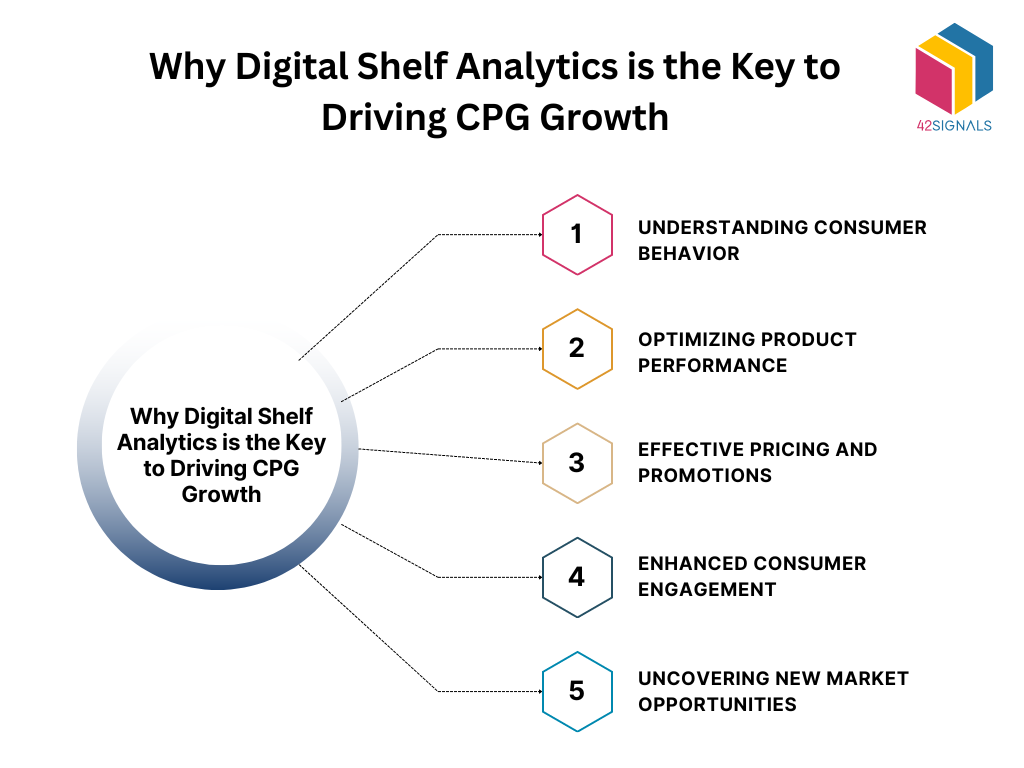
Factors Leading to CPG Growth
Understanding Consumer Behavior
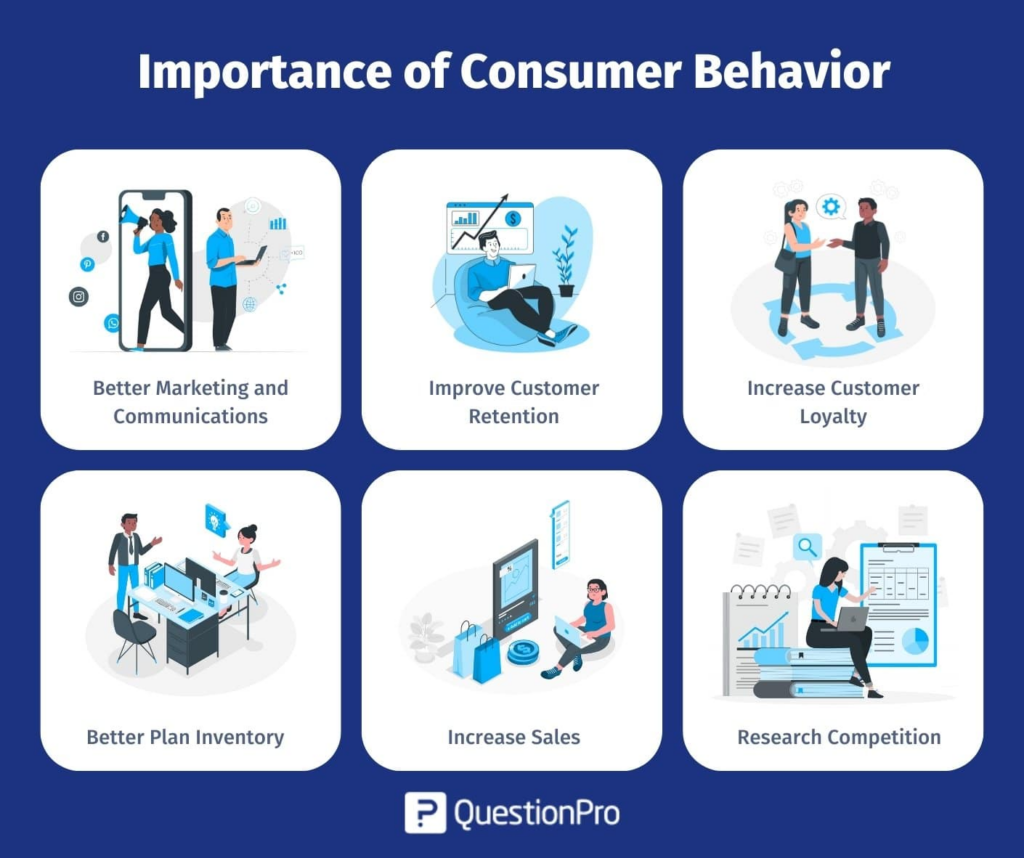
Image Source: Question Pro
Consumer packaged goods (CPG) brands operate in an increasingly competitive landscape, where understanding consumer behavior is essential for growth. With the rapid shift to online shopping and digital interactions, brands must leverage data-driven insights to stay relevant. Digital shelf analytics plays a crucial role in this by providing deep insights into consumer behavior.
By analyzing consumer purchase patterns, browsing habits, and demographic information, brands gain a clearer picture of what their customers want and need. These insights allow companies to track evolving trends, identify popular products, and anticipate emerging demands. For example, if data indicates a growing preference for sustainable packaging, a brand can prioritize eco-friendly alternatives, demonstrating its commitment to social responsibility and aligning with consumer expectations.
Understanding consumer behavior also enables CPG brands to refine their messaging. Marketing strategies must be personalized and data-driven to resonate with the target audience. Brands that can adapt to changing preferences by tailoring their advertising, promotions, and product offerings will build stronger relationships with consumers, fostering brand loyalty and driving long-term growth.
Optimizing Product Performance

Image Source: Blitzllama
A successful CPG brand must continuously assess and improve its product performance to remain competitive. Digital shelf analytics provides brands with real-time data on sales, consumer reviews, and market performance, helping them identify product strengths and weaknesses.
For instance, if a specific product receives numerous negative reviews due to quality issues, brands can address these concerns by making necessary modifications. On the other hand, positive feedback on particular features can inform future product development, ensuring that brands continue to meet consumer needs effectively.
Moreover, CPG companies can leverage data-driven insights to innovate and stay ahead of the competition. By analyzing sales trends and customer feedback, brands can identify opportunities for new product lines, improved formulations, or even better packaging solutions. Innovation should be driven by real consumer needs, ensuring that product enhancements are meaningful and impactful.
Staying relevant in a fast-paced market requires continuous optimization. By utilizing digital shelf analytics, brands can adapt to shifting preferences, refine their offerings, and maintain a competitive edge, ultimately leading to higher consumer satisfaction and increased market share.
Effective Pricing and Promotions for CPG Growth

Pricing plays a crucial role in the success of CPG brands. Consumers are highly price-sensitive, and competitive pricing strategies can significantly influence purchase decisions. Digital shelf analytics enables brands to fine-tune their pricing strategies by analyzing market trends, competitor pricing, and consumer behavior.
For example, if competitors are offering discounts on a similar product, a brand can adjust its pricing accordingly to maintain competitiveness. Similarly, pricing elasticity analysis helps determine how changes in price impact demand, allowing brands to optimize their pricing for maximum profitability.
Promotional strategies also benefit from data-driven insights. CPG brands can identify the most effective promotional tactics, including discounts, bundle deals, and seasonal offers. By understanding which promotions drive the highest conversions, brands can allocate resources efficiently, maximizing return on investment.
Additionally, real-time analytics enable dynamic pricing and promotional adjustments. If a product experiences a sudden surge in demand, brands can capitalize on the momentum by adjusting pricing or introducing limited-time offers. These strategies create a sense of urgency, encouraging consumers to make purchase decisions quickly and driving revenue growth.
Enhanced Consumer Engagement
Engaging with consumers effectively is a critical component of CPG growth. The modern consumer expects personalized experiences and direct interactions with their favorite brands. Digital shelf analytics provides the foundation for meaningful consumer engagement by offering insights into consumer preferences, shopping behavior, and sentiment.
By leveraging these insights, brands can create highly personalized marketing campaigns. For instance, targeted advertising based on purchase history ensures that consumers receive relevant product recommendations, increasing the likelihood of conversion. Similarly, customized email marketing campaigns tailored to specific consumer segments enhance engagement and foster brand loyalty.
Another key aspect of consumer engagement is responding to feedback in real time. Sentiment analysis tools help brands monitor online reviews, social media mentions, and customer feedback. If consumers express dissatisfaction with a product or service, brands can proactively address concerns, demonstrate responsiveness, and rebuild trust. This level of engagement strengthens brand reputation and increases customer retention.
Furthermore, social media and influencer collaborations are valuable tools for consumer engagement. By partnering with influencers who align with their brand values, CPG companies can reach a broader audience, build credibility, and establish stronger connections with consumers. Engaging content, interactive campaigns, and user-generated content further enhance brand visibility and consumer interaction.
Uncovering New Market Opportunities for CPG Growth
In a dynamic market, identifying new growth opportunities is essential for CPG brands. Digital shelf analytics helps brands uncover untapped markets, emerging trends, and potential expansion opportunities by analyzing consumer behavior and market gaps.
For instance, demographic data may reveal a growing demand for health-conscious products in a specific region. A CPG brand specializing in snacks can introduce a new line of organic or gluten-free products to cater to this demand. Similarly, cross-industry analysis can reveal innovative partnerships, such as beverage brands collaborating with fitness companies to promote healthier lifestyles.
Brands can also leverage analytics to explore new distribution channels. As e-commerce continues to grow, brands must optimize their online presence to reach a broader audience. Insights into online shopping behavior can inform strategies for expanding into marketplaces such as Amazon, Walmart, or niche e-commerce platforms.
Additionally, digital shelf analytics enables CPG companies to test new product concepts quickly. By launching limited editions or trial versions, brands can gauge consumer interest and make data-backed decisions on whether to scale production. This agile approach reduces risks associated with new product launches and increases the likelihood of success.
The Road Ahead for CPG Growth
The CPG industry is undergoing a transformation, driven by evolving consumer expectations and technological advancements. Digital shelf analytics has emerged as a powerful tool for brands seeking to navigate this dynamic landscape successfully.
By harnessing the power of data, CPG brands can gain deeper insights into consumer behavior, optimize product performance, develop effective pricing and promotional strategies, enhance consumer engagement, and identify new market opportunities. These strategies enable brands to stay ahead of the competition, maximize profitability, and establish long-term success in an ever-changing market.
Incorporating digital analytics into business operations is no longer optional—it is a necessity for brands that aim to thrive in the digital age. Those who embrace data-driven decision-making will be well-positioned to capitalize on emerging trends, foster meaningful consumer relationships, and drive sustainable growth. As the industry continues to evolve, the brands that prioritize innovation, agility, and consumer-centric strategies will remain at the forefront of CPG growth.
Frequently Asked Questions
What does CPG mean? CPG stands for Consumer Packaged Goods, referring to products that are sold quickly and at relatively low cost. These goods are typically non-durable items that consumers use daily, such as food, beverages, toiletries, and cleaning products.
Is the CPG industry growing? Yes, the CPG industry is experiencing growth. According to industry analysis, the sector is projected to add $3.18 trillion in value in 2024, with the U.S. contributing $821 billion. By 2031, the industry’s value is expected to reach $18.94 trillion, growing at a Compound Annual Growth Rate (CAGR) of 5.1% from 2022 to 2031.
What does CPG data stand for? CPG data refers to the information and metrics related to consumer packaged goods, including sales figures, market trends, consumer behavior, inventory levels, and supply chain logistics. This data helps manufacturers and retailers make informed decisions about production, marketing, and distribution strategies.
What is the fastest-growing CPG category? The health and wellness sector is among the fastest-growing categories within the CPG industry. This includes products related to appearance (hair care and skin care) and health (OTC medicine and at-home healthcare products). The wellness market is predicted to grow into a $7 trillion space in the coming years.
